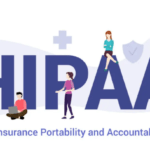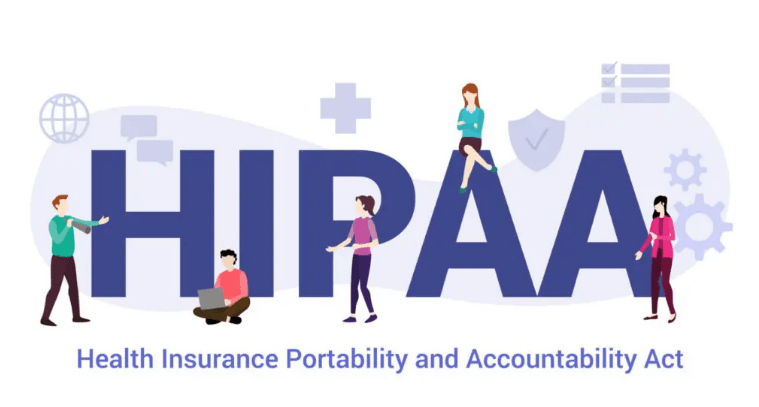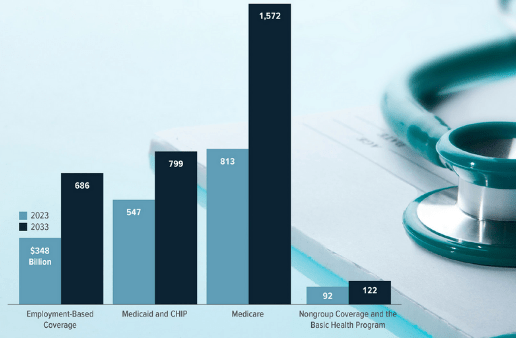Healthcare insurance and quality improvement are two crucial elements in the healthcare industry that are deeply intertwined. Health insurance provides the financial mechanism for individuals to access necessary medical services, while quality improvement (QI) focuses on enhancing the care delivery processes and patient outcomes. In the United States, the rising costs of healthcare and the need for improved quality of care have led to an increased emphasis on linking healthcare insurance to quality improvement initiatives. This article explores the relationship between healthcare insurance and quality improvement, examining key strategies, challenges, and the impact on patient care and healthcare systems.
Understanding Healthcare Insurance
Healthcare insurance is a contract that requires an insurer to cover a portion of an individual’s medical expenses in exchange for a premium. The primary purpose of health insurance is to provide financial protection against high medical costs and ensure access to healthcare services. Health insurance plans vary widely, offering different levels of coverage, benefits, and cost-sharing arrangements. In the United States, health insurance can be broadly categorized into the following types:
- Private Health Insurance: Offered by private companies, these plans are often provided through employers or purchased individually. Private health insurance plans include Health Maintenance Organizations (HMOs), Preferred Provider Organizations (PPOs), and Exclusive Provider Organizations (EPOs).
- Public Health Insurance: Funded by the government, public health insurance programs include Medicare, Medicaid, the Children’s Health Insurance Program (CHIP), and the Veterans Health Administration (VHA). These programs serve specific populations, such as the elderly, low-income individuals, and veterans.
- Marketplace Insurance: Established under the Affordable Care Act (ACA), health insurance marketplaces provide a platform for individuals and small businesses to compare and purchase insurance plans. The marketplaces offer subsidies to make coverage more affordable for low- and moderate-income individuals.
- Catastrophic Health Insurance: Designed to cover major medical expenses resulting from severe illnesses or accidents, catastrophic health insurance plans typically have high deductibles and lower premiums. These plans are often chosen by young, healthy individuals who want protection against unexpected, high-cost medical events.

The Importance of Quality Improvement in Healthcare
Quality improvement (QI) is a systematic approach to enhancing healthcare services, processes, and outcomes. The primary goal of QI is to improve patient care by reducing errors, increasing efficiency, and ensuring that care is safe, effective, and patient-centered. Key principles of QI include:
- Patient-Centered Care: Focuses on respecting patients’ preferences, needs, and values, and ensuring that these guide all clinical decisions.
- Safety: Aims to prevent harm to patients from the care intended to help them. This includes reducing medical errors, infections, and complications.
- Effectiveness: Ensures that care provided is based on evidence and produces desired outcomes. Effective care involves using best practices and avoiding unnecessary or ineffective interventions.
- Efficiency: Reduces waste and optimizes the use of resources, including time, money, and materials. Efficient care aims to eliminate unnecessary tests, procedures, and administrative costs.
- Timeliness: Reduces waiting times and delays for both patients and healthcare providers. Timely care is essential for preventing complications and improving patient satisfaction.
- Equity: Ensures that care is provided fairly and without discrimination. Equity involves addressing disparities in access to care and health outcomes among different populations.
The Role of Healthcare Insurance in Quality Improvement
Healthcare insurance plays a critical role in driving quality improvement by influencing how healthcare services are delivered, reimbursed, and measured. Insurance companies and public programs have increasingly adopted strategies to link payment to the quality of care provided. These strategies include:
- Value-Based Purchasing (VBP)Value-based purchasing is a payment model that rewards healthcare providers for delivering high-quality care rather than the volume of services provided. Under VBP, insurers and public programs such as Medicare and Medicaid tie reimbursement rates to performance on specific quality metrics. These metrics may include patient outcomes, adherence to clinical guidelines, patient satisfaction, and efficiency measures. By financially incentivizing providers to improve quality, VBP aims to enhance care delivery and reduce healthcare costs.
- Pay-for-Performance (P4P)Pay-for-performance is a model where healthcare providers receive financial incentives based on their performance on predetermined quality measures. P4P programs are designed to motivate providers to improve patient care by rewarding them for meeting or exceeding quality benchmarks. Common quality measures in P4P programs include hospital readmission rates, infection rates, preventive care compliance, and patient satisfaction scores. By linking payment to quality, P4P encourages providers to prioritize quality improvement initiatives.
- Accountable Care Organizations (ACOs)Accountable Care Organizations are groups of healthcare providers, such as hospitals, doctors, and specialists, who voluntarily come together to provide coordinated care to a specific population of patients. ACOs aim to improve patient outcomes by enhancing care coordination, reducing duplication of services, and preventing medical errors. Under the ACO model, providers are held accountable for the quality and cost of care they deliver. ACOs that meet quality and cost-saving targets are eligible for shared savings, providing a financial incentive to focus on quality improvement.
- Bundled PaymentsBundled payments, also known as episode-based payments, are a payment model where a single payment is made for all services related to a specific episode of care, such as a surgical procedure or chronic disease management. By providing a fixed payment for a bundle of services, this model encourages providers to deliver care more efficiently and improve coordination. Bundled payments incentivize providers to avoid unnecessary tests and procedures, reduce complications, and enhance patient outcomes.
- Patient-Centered Medical Homes (PCMH)Patient-Centered Medical Homes are healthcare delivery models that emphasize primary care, care coordination, and patient engagement. PCMHs focus on providing comprehensive, continuous, and coordinated care to patients, particularly those with chronic conditions. Health insurance plans and public programs often provide additional payments or incentives to primary care practices that achieve PCMH recognition. By promoting a holistic and patient-centered approach to care, PCMHs contribute to quality improvement and better health outcomes.
- Quality Reporting and TransparencyHealth insurance companies and public programs often require healthcare providers to report on various quality measures. Quality reporting provides data on performance, outcomes, and patient satisfaction, which can be used to identify areas for improvement. Transparency in reporting allows patients to compare providers based on quality metrics, empowering them to make informed decisions about their care. By making quality data publicly available, insurers and regulators encourage providers to improve performance and compete on quality.

Challenges in Linking Healthcare Insurance to Quality Improvement
While healthcare insurance plays a vital role in promoting quality improvement, several challenges must be addressed to achieve meaningful and sustained improvements. These challenges include:
- Measuring QualityOne of the primary challenges in linking healthcare insurance to quality improvement is accurately measuring quality. Quality in healthcare is multifaceted, encompassing clinical outcomes, patient experience, safety, and efficiency. Developing reliable and valid quality measures that capture these dimensions is complex. Additionally, data collection and reporting can be burdensome for healthcare providers, and the variability in measurement methods can lead to inconsistencies in quality assessments.
- Provider Buy-In and EngagementEngaging healthcare providers in quality improvement initiatives is essential for success. However, providers may be resistant to change, particularly if they perceive quality improvement efforts as increasing administrative burdens or financial risks. Gaining provider buy-in requires clear communication about the benefits of quality improvement, aligning incentives with provider goals, and providing support and resources to implement changes.
- Patient Engagement and Health LiteracyQuality improvement efforts must involve patients as active participants in their care. Engaging patients in their healthcare decisions, promoting health literacy, and encouraging adherence to treatment plans are critical for achieving better outcomes. However, patient engagement can be challenging due to factors such as low health literacy, cultural differences, and socioeconomic barriers. Insurers and providers must work together to develop strategies to educate and empower patients.
- Addressing Social Determinants of HealthSocial determinants of health, such as income, education, housing, and access to transportation, play a significant role in health outcomes. Quality improvement efforts must consider these social determinants to address disparities and improve health equity. Insurers and providers can collaborate to develop programs that address social determinants, such as providing transportation to medical appointments, offering nutrition and wellness programs, and connecting patients to community resources.
- Balancing Cost Containment and Quality ImprovementWhile quality improvement can lead to better patient outcomes and cost savings, there can be a tension between cost containment and quality goals. Insurers and providers must find a balance between reducing costs and ensuring high-quality care. Cost-cutting measures that compromise care quality can lead to adverse outcomes and patient dissatisfaction. A focus on value-based care, where quality and cost are aligned, can help address this challenge.
- Technological ChallengesThe use of health information technology (HIT) is essential for quality improvement, as it enables data collection, analysis, and sharing. However, implementing and maintaining HIT systems can be costly and complex. Interoperability issues, where different systems cannot communicate effectively, can hinder data exchange and care coordination. Addressing these technological challenges requires investment in infrastructure, training, and standardization of data formats.
The Impact of Quality Improvement on Healthcare Outcomes
Quality improvement initiatives driven by healthcare insurance have the potential to significantly impact patient outcomes and the overall healthcare system. Key impacts include:
- Reduced Hospital ReadmissionsQuality improvement efforts, such as care coordination, patient education, and follow-up care, can reduce hospital readmission rates. By addressing factors that contribute to readmissions, such as medication management and post-discharge support, healthcare providers can improve patient outcomes and reduce healthcare costs.
- Enhanced Patient SafetyQuality improvement initiatives that focus on patient safety, such as infection control, medication reconciliation, and surgical checklists, can reduce medical errors and adverse events. Improved patient safety leads to better outcomes, reduced complications, and increased patient trust in the healthcare system.
- Improved Chronic Disease ManagementQuality improvement efforts that emphasize preventive care, early intervention, and chronic disease management can lead to better control of chronic conditions such as diabetes, hypertension, and heart disease. By providing comprehensive care and support, healthcare providers can improve patients’ quality of life and reduce the burden of chronic diseases on the healthcare system.
- Increased Patient SatisfactionQuality improvement initiatives that prioritize patient-centered care, communication, and patient engagement can lead to higher levels of patient satisfaction. Satisfied patients are more likely to adhere to treatment plans, participate in preventive care, and have better health outcomes. Patient satisfaction is also an important metric for healthcare providers and insurers, as it reflects the quality of care and the patient experience.
- Cost SavingsBy improving care quality, reducing errors, and preventing complications, quality improvement initiatives can lead to significant cost savings. Value-based care models that reward high-quality, efficient care can help reduce unnecessary tests, procedures, and hospitalizations. These cost savings benefit patients, insurers, and the healthcare system as a whole.
Conclusion
Healthcare insurance and quality improvement are closely linked in the pursuit of better health outcomes and a more efficient healthcare system. By implementing value-based purchasing, pay-for-performance, and other quality-driven payment models, insurers can incentivize healthcare providers to prioritize quality improvement. Despite challenges such as measuring quality, engaging providers and patients, and addressing social determinants of health, the focus on quality improvement holds the promise of reducing healthcare costs, enhancing patient safety, and improving patient satisfaction.
As the healthcare industry continues to evolve, the integration of healthcare insurance and quality improvement will remain a critical component of efforts to create a sustainable, equitable, and high-performing healthcare system. By embracing a culture of continuous improvement and collaboration, insurers, providers, and patients can work together to achieve the shared goal of high-quality, accessible, and affordable healthcare for all.











sbd9bf